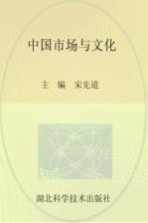

中国市场与文化PDF电子书下载
- 电子书积分:14 积分如何计算积分?
- 作 者:宋先道编著
- 出 版 社:武汉:湖北科学技术出版社
- 出版年份:2011
- ISBN:9787535245359
- 页数:424 页
Chapter 1 The General Situation in China 1
1.1 The Root and Characteristics of Chinese Culture 3
1.2 The General Situation of Politics 4
1.3 China's Population 8
1.4 The General Situation of Geography 9
1.5 The General Situation of Chinese Holiday 10
1.6 Rivers and Lakes 12
1.7 Cther Information about China 14
Chapter 2 Chinese History 18
2.1 Introduction 19
2.2 The Dawn of China——Remote Antiquity to Slave Society(1.7 million years ago—2070 B.C.) 22
2.3 Slave Society 24
2.4 Feudal Society 28
2.5 Modern Period——The Republic of China(1911—1949) 39
Chapter 3 Chinese Districts and Provinces 45
3.1 Chinese Map and Direction 46
3.2 China's Administrative Division System 48
3.3 General Information on Chinese Districts and Provinces 49
3.4 China Economic Zone 56
Chapter 4 Chinese Population and Nations 64
4.1 The General Introduction of Chinese Population 65
4.2 Chinese 56 Nations and Their Distributions 72
4.3 Life of Each Nations of China 77
Chapter 5 People's Life in China 97
5.1 Changes in Consumption Stage and Culture 98
5.2 The Changes of the Consumption Structure of Residents 101
5.3 The Network Consumption 103
5.4 Tourism Consumption 105
5.5 Foreign Culture in China 108
Chapter 6 Chinese Etiquette 111
6.1 Summary of Etiquette 112
6.2 China's Traditional Festival Customs and Ritual 113
6.3 Chinese People Eating Etiquette 118
6.4 Chinese People of Various Ceremonial Gifts 120
6.5 Famous Chinese Sayings 124
Chapter 7 Chinese Face Culture 127
7.1 The Origin of Face 128
7.2 The Representations of Face 130
7.3 The Detailed Operation of Face 135
7.4 The Advantage and Disadvantage Analysis of the Face Psychology 138
7.5 The Difference of Face between China and Western Countries 140
Chapter 8 Chinese Numerical Culture 144
8.1 Introduction 145
8.2 The Origin of Chinese Numeral Culture 146
8.3 The General Connotation of Numbers in Chinese Culture 147
8.4 The Display of Numerical Culture in Chinese People's Daily Life 151
8.5 The Use of Lucky Numbers in Business 160
Chapter 9 Chinese Body Language 165
9.1 Brief Introduction about Body Language 166
9.2 Chinese Body Language 167
9.3 A Brief Introduction of Negative Chinese Body Language 171
Chapter 10 Euphemisms and Taboos 175
10.1 Brief Introduction 176
10.2 Euphemisms 176
10.3 Taboos 177
10.4 Comparison between Western Taboos and Chinese Taboos 178
Chapter 11 Business Culture in China 183
11.1 Addressing in China 184
11.2 Business Arrangements 187
11.3 Business Entertaining 188
11.4 Chinese Business Negotiation Process 191
11.5 Chinese Business Negotiating Style 192
Chapter 12 Joint Ventures in China 196
12.1 State of Joint Ventures in China 197
12.2 How to Establish a Foreign-Funded Enterprise in China 200
12.3 How to Establish an Equity Joint Venture in China 203
12.4 The Factors that Should be Considered when Establishing a Joint Venture 205
Chapter 13 Chinese Festival 210
13.1 The Spring Festival 211
13.2 The Tomb-sweeping Day 219
13.3 The International Labor Days 223
13.4 The Dragon Boat Festival 225
13.5 The Mid-Autumn Festival 229
13.6 The Chinese National Day 233
13.7 Other Festivals 235
Chapter 14 The Chinese Zodiac Culture 239
14.1 Introduction 240
14.2 The Legends of Chinese Zodiac 241
14.3 The Character of Persons and the Zodiac Animal Signs 244
14.3 Social Function of the Chinese Zodiac 251
Chapter 15 Chinese Twenty-four Solar Terms 256
15.1 The Origin of the Twenty-Four Solar Terms 257
15.2 The Significance of the Twenty-Four Solar Terms 263
15.3 Customs Concerning the Twenty-Four Solar Terms 264
15.4 More Popular Proverbs and Ballad on the Solar Terms 267
Chapter 16 Chinese Wedding 271
16.1 Ancient Chinese Wedding Customs 272
16.2 Contemporary Chinese Wedding 276
16.3 Chinese-foreign Marriages 279
16.4 The Main Color of Wedding 281
16.5 The Wedding Banquet 282
16.6 The Social Function of Wedding in China 283
Chapter 17 Chinese Wushu 287
17.1 A Brief Introduction of Wushu 289
17.2 Characteristics of Chinese Wushu 293
17.3 Functions of Chinese Kungfu 296
17.4 Some Representative Chinese Wushu(Kung Fu) 297
17.5 Points to Remember:For Foreigners Learning Wushu 304
17.6 The Management and Marketing of China's Wushu 306
Chapter 18 Chinese Religions 309
18.1 Introduction to Chinese Religions 310
18.2 Traditional Religions and Practices in China 315
18.3 Traditional Chinese Religions and Business 326
Chapter 19 Chinese Funeral 349
19.1 Funeral Customs 350
19.2 Symbolism 359
Chapter 20 Education in China 362
20.1 The Situation of Chinese Education 363
20.2 Modern Education 365
20.3 Studying in China 367
Chapter 21 The Difference of Culture between Western Countries and China 375
21.1 Brief Introduction about the Difference of Culture 376
21.2 Different Living Circumstance 378
21.3 Different Historical Allusion 379
21.4 Different Religions and Beliefs 381
21.5 Different Traditions and Customs 382
21.6 Form of Differences 385
Chapter 22 Classical Chinese Culture and Arts 394
22.1 The Tea Culture 396
22.2 Cut-paper 400
22.3 Kites 402
22.4 Peking Opera 406
22.5 Chinese Painting 409
22.6 Chinese Food Culture 411
22.7 Chinese Wine Culture 413
22.8 Chinese Garden 416
22.9 Traditional Chinese Medicine 417
22.10 Other Classical Culture and Arts 420
- 《东北民歌文化研究及艺术探析》(中国)杨清波 2019
- 《异质性条件下技术创新最优市场结构研究 以中国高技术产业为例》千慧雄 2019
- 《大学英语教学的跨文化交际视角研究与创新发展》许丽云,刘枫,尚利明著 2020
- 《跨文化交际背景下的中西文化比较研究》任永进,贺志涛著 2019
- 《生态文化建设的社会机制研究》阮晓莺著 2019
- 《党内政治文化建设指南》苏玉主编 2017
- 《白纻舞及其歌辞的文化解读》王俊,曹化根著 2019
- 《社会文化系统中的翻译》姜秋霞,杨正军 2019
- 《BCG经营战略 成熟市场的销售变革》(日)杉田浩章著 2019
- 《“十二五”普通高等教育本科国家级规划教材 市场营销》王永贵 2019
- 《市政工程基础》杨岚编著 2009
- 《家畜百宝 猪、牛、羊、鸡的综合利用》山西省商业厅组织技术处编著 1959
- 《《道德经》200句》崇贤书院编著 2018
- 《高级英语阅读与听说教程》刘秀梅编著 2019
- 《计算机网络与通信基础》谢雨飞,田启川编著 2019
- 《看图自学吉他弹唱教程》陈飞编著 2019
- 《法语词汇认知联想记忆法》刘莲编著 2020
- 《培智学校义务教育实验教科书教师教学用书 生活适应 二年级 上》人民教育出版社,课程教材研究所,特殊教育课程教材研究中心编著 2019
- 《国家社科基金项目申报规范 技巧与案例 第3版 2020》文传浩,夏宇编著 2019
- 《流体力学》张扬军,彭杰,诸葛伟林编著 2019
- 《钒产业技术及应用》高峰,彭清静,华骏主编 2019
- 《现代水泥技术发展与应用论文集》天津水泥工业设计研究院有限公司编 2019
- 《异质性条件下技术创新最优市场结构研究 以中国高技术产业为例》千慧雄 2019
- 《Prometheus技术秘笈》百里燊 2019
- 《中央财政支持提升专业服务产业发展能力项目水利工程专业课程建设成果 设施农业工程技术》赵英编 2018
- 《药剂学实验操作技术》刘芳,高森主编 2019
- 《林下养蜂技术》罗文华,黄勇,刘佳霖主编 2017
- 《脱硝运行技术1000问》朱国宇编 2019
- 《催化剂制备过程技术》韩勇责任编辑;(中国)张继光 2019
- 《信息系统安全技术管理策略 信息安全经济学视角》赵柳榕著 2020
